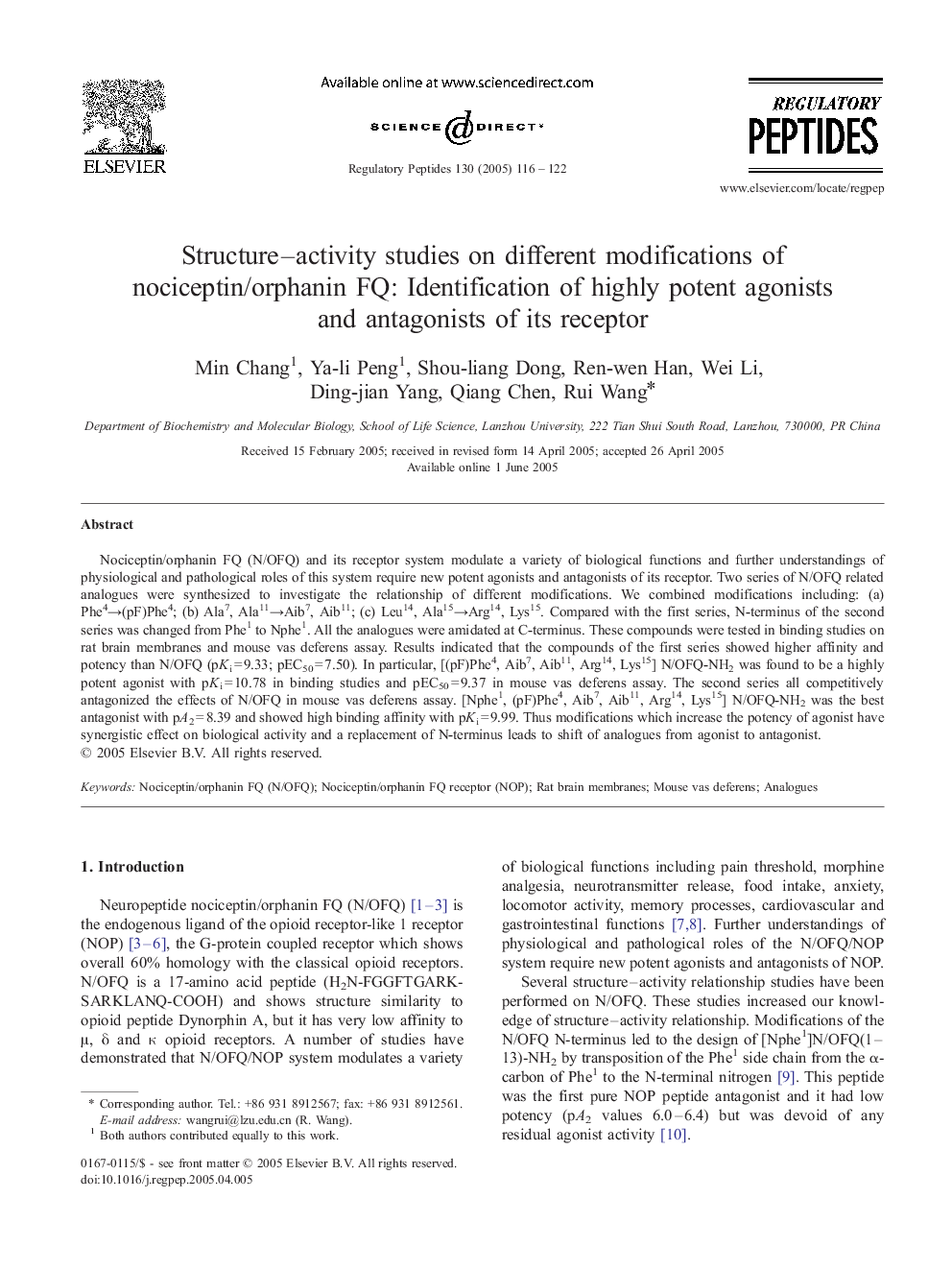| Article ID | Journal | Published Year | Pages | File Type |
|---|---|---|---|---|
| 9894380 | Regulatory Peptides | 2005 | 7 Pages |
Abstract
Nociceptin/orphanin FQ (N/OFQ) and its receptor system modulate a variety of biological functions and further understandings of physiological and pathological roles of this system require new potent agonists and antagonists of its receptor. Two series of N/OFQ related analogues were synthesized to investigate the relationship of different modifications. We combined modifications including: (a) Phe4â(pF)Phe4; (b) Ala7, Ala11âAib7, Aib11; (c) Leu14, Ala15âArg14, Lys15. Compared with the first series, N-terminus of the second series was changed from Phe1 to Nphe1. All the analogues were amidated at C-terminus. These compounds were tested in binding studies on rat brain membranes and mouse vas deferens assay. Results indicated that the compounds of the first series showed higher affinity and potency than N/OFQ (pKi = 9.33; pEC50 = 7.50). In particular, [(pF)Phe4, Aib7, Aib11, Arg14, Lys15] N/OFQ-NH2 was found to be a highly potent agonist with pKi = 10.78 in binding studies and pEC50 = 9.37 in mouse vas deferens assay. The second series all competitively antagonized the effects of N/OFQ in mouse vas deferens assay. [Nphe1, (pF)Phe4, Aib7, Aib11, Arg14, Lys15] N/OFQ-NH2 was the best antagonist with pA2 = 8.39 and showed high binding affinity with pKi = 9.99. Thus modifications which increase the potency of agonist have synergistic effect on biological activity and a replacement of N-terminus leads to shift of analogues from agonist to antagonist.
Related Topics
Life Sciences
Biochemistry, Genetics and Molecular Biology
Biochemistry
Authors
Min Chang, Ya-li Peng, Shou-liang Dong, Ren-wen Han, Wei Li, Ding-jian Yang, Qiang Chen, Rui Wang,
